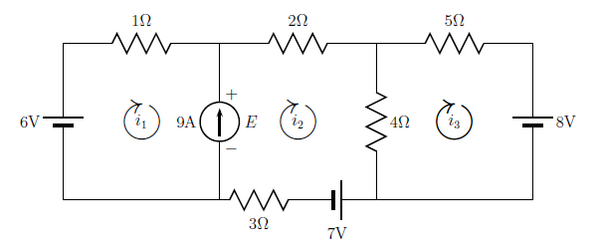Science:Math Exam Resources/Courses/MATH152/April 2010/Question A 11
{{#incat:MER QGQ flag|{{#incat:MER QGH flag|{{#incat:MER QGS flag|}}}}}}
• QA 1 • QA 2 • QA 3 • QA 4 • QA 5 • QA 6 • QA 7 • QA 8 • QA 9 • QA 10 • QA 11 • QA 12 • QA 13 • QA 14 • QA 15 • QA 16 • QA 17 • QA 18 • QA 19 • QA 20 • QA 21 • QA 22 • QA 23 • QA 24 • QA 25 • QA 26 • QA 27 • QA 28 • QA 29 • QA 30 • QB 1(a) • QB 1(b) • QB 1(c) • QB 2(a) • QB 2(b) • QB 3(a) • QB 3(b) • QB 3(c) • QB 3(d) • QB 4(a) • QB 4(b) • QB 4(c) • QB 4(d) • QB 4(e) • QB 5(a) • QB 5(b) • QB 6(a) • QB 6(b) • QB 6(c) • QB 6(d) • QB 6(e) •
|
Make sure you understand the problem fully: What is the question asking you to do? Are there specific conditions or constraints that you should take note of? How will you know if your answer is correct from your work only? Can you rephrase the question in your own words in a way that makes sense to you? |
|
If you are stuck, check the hint below. Consider it for a while. Does it give you a new idea on how to approach the problem? If so, try it! |
Hint |
|---|
|
Current source, E is on a branch shared by two loop currents, how do you resolve that? |
|
Checking a solution serves two purposes: helping you if, after having used the hint, you still are stuck on the problem; or if you have solved the problem and would like to check your work.
|
Solution |
|---|
|
To figure out the current on the current source E, we must choose which direction we will cross the source. It shouldn't matter which direction we take and so we will show both possibilities. Traverse the current source from bottom to top: Here we are moving with current 2 () and against current 1 (). E has a current of 9A in the upward direction (indicated by the arrow). Since we are moving upwards then the current is +9A. Therefore, Traverse the current source from top to bottom: Here we are moving with current 1 () and against current 2 (). E has a current of 9A in the upward direction (indicated by the arrow). Since we are moving downward then the current is -9A. Therefore, Notice that these are the same equation as they should be.
If people are looking to practice there work with circuits, we can continue work from here and from A10 to solve for the unknown voltages and loop currents. Based on the same reasoning in A10 we can get that the Kirchhoff linear equation for loop 1 is where recall that positive numbers mean voltage drops (across the resistors and across the current source since it points upwards while our clockwise current points downwards there) and that negative numbers mean voltage gains (across the battery since we move from the negative to positive terminal). We already have the second loop from A10 as and so the third and final loop is where the resistor has a voltage drop since we're moving in the direction of current loop 3 but a voltage gain from current loop 2. So far we only have 3 equations for 4 unknowns; the last one comes from the current source. From above we already have that We can write this in a matrix problem as We can write this is an augmented matrix as which we can row reduce to get Therefore we see that our solution is Do not worry about the presence of a negative sign, a negative loop current just means that the current ( and in this case) actually flows counter-clockwise, not clockwise like we assumed. |
{{#incat:MER CT flag||
}}













![{\displaystyle \left[{\begin{array}{cccc|c}1&0&0&1&6\\0&9&-4&-1&-7\\0&-4&9&0&-8\\-1&1&0&0&9\end{array}}\right]}](https://wiki.ubc.ca/api/rest_v1/media/math/render/svg/1cd6e9c7b270820e9879356067ce85f091fcb7fb)
![{\displaystyle \left[{\begin{array}{cccc|c}1&0&0&0&-8.4595\\0&1&0&0&0.5405\\0&0&1&0&-0.6486\\0&0&0&1&14.4595\\\end{array}}\right].}](https://wiki.ubc.ca/api/rest_v1/media/math/render/svg/70369f09333e808ff3eec38f296ca6298d61957f)



